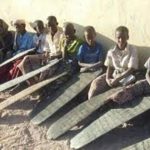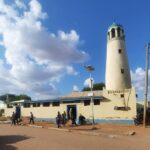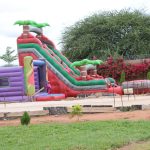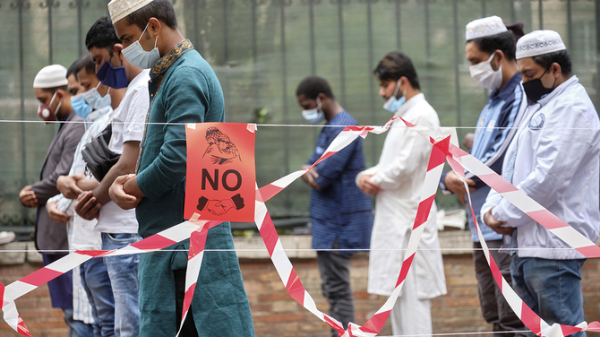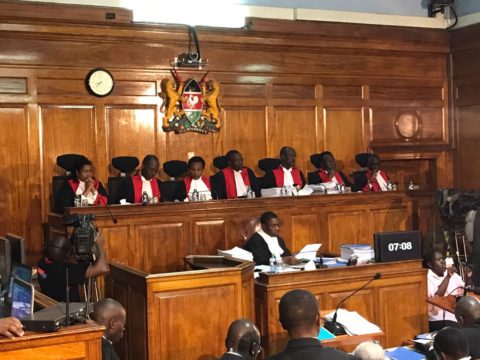In most of hard-hit villages 18 liters of water costs between 30-40 Kenya shillings, a whooping price that the overwhelming majority of the hungry population cannot afford. This means that many households have to rely on very few liters of water to cook food- Water for cleaning and washing is a dream for many.
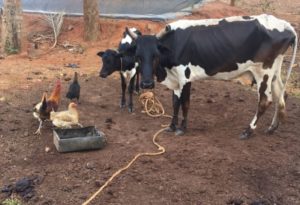 By Abdullahi Jamaa
By Abdullahi Jamaa
I left Mombasa for Kilifi on Sunday morning with a group of Muslim volunteers from Masjid Omar Farooq in Nyali. Kilifi is about two to three hours from Mombasa by road.
It’s one of the areas worst affected by the drought crisis currently threatening 1.6 million Kenyans and we are on our way to help assess the work of our Dawah Group in providing water to those who need it most.
Driving from Mombasa to North Coast the earth hastily loses the lushness it had. This particular hot Sunday there are few and far-apart clouds in the bluish skies and undoubtedly none that would bring much-awaited rain to these areas that have not seen any good rain for the past one year.
Kilifi town is relatively hot and humid with some of its vegetation betraying the biting season. One would imagine there is no drought if the climatic condition of this urban town is anything to go by.
But any imagination is wrong, the drought is real and ruining, its searing effect is felt the moment you leave Kilifi town for Ganze- a small Sub-County headquarter that is seemingly the epicenter of current drought crisis.
Ganze is surrounded by several drought-stricken rural hamlets where many families survive on the edge. The villages are far apart and dot the barren land.
About 35KMs away from Kilifi town is a small, marginalized and moribund village known as Magogoni-Silala and this is where the first signs of drought menacingly emerge. Here is where we met a lone middle-aged woman tethering about three emaciated cows.
In front of a flock of chicken, her weak cows grazed the empty red-desert ground with their front tiny legs- the earth is barren, bereft of any foliage and the cows have nothing to eat.
“There is drought, the biggest problem is lack of water” Ms. Aisha Bakari told me about the drought “There has been no rain here”
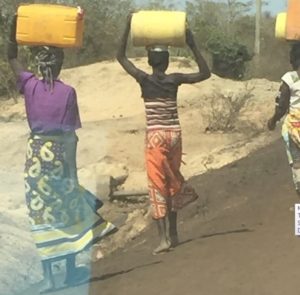 We drove dipper into the hinterland where the drought is biting severely. We passed through several river ways, water catchments and valleys that are all dry and dead. The trees lacked leaves given the sweltering heat that has been occasioned by several seasons of failed rains.
We drove dipper into the hinterland where the drought is biting severely. We passed through several river ways, water catchments and valleys that are all dry and dead. The trees lacked leaves given the sweltering heat that has been occasioned by several seasons of failed rains.
The parched and bare vegetation cannot break the desert winds that occasionally gasp into our vehicle; our driver sporadically slows down on the rough and ragged road leaving trails of dust behind us.
As we drove on the semi-desert sand paths we are repeatedly stared by young children who have run out of water and are seemingly desperate.
Sometimes we pumped into women and young children trekking with empty jerrycans in search of water. Many of the young children are too young to know what is happening.
Once in a while we met mothers carrying heavy loads of water on their tired heads while babies strapped at their back. Mothers and their young children seem to bear the brunt of the harsh dry spell.
On the roadside, through the car window I could see one poor cow that is almost to collapse; it is heavily emaciated and only waits for its turn to die as the drought exacerbates.
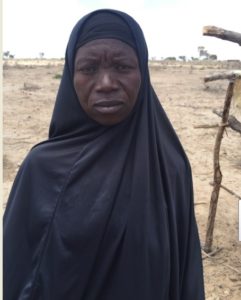 Ms. Saumu Kasim who lives in Maryango village a drought hot-spot told me that she had just lost one of her last two cows few moments before we arrived.
Ms. Saumu Kasim who lives in Maryango village a drought hot-spot told me that she had just lost one of her last two cows few moments before we arrived.
“I had six cows, four have already died and one has just succumbed before you arrived here” she told me
I could not help but only with a poor sorry from the back of mind. I hurriedly left for our next destination as Ms. Saumu’s eyes that rested on her frowned face closed occasionally to escape gusts of wind that blew sand from the treeless earth onto her tired frame.
It looks like as if the drought is at its peak and a few more months of lack of rains will be translated into catastrophic loss of life and properties. It is my understanding that a huge percentage of cattle have already succumbed to the raging drought making many families poor and helpless.
Residents are sounding alarm bells as the threat gets red in tooth and claw and they say death is around the corner every time they see their animals are dying.
Now it is livestock that are dying in masses in much of Kilifi’s hinterlands but soon people and babies may follow.
In the midst of a sparse vegetation cover and high temperatures many cattle herders are facing an acute shortage of pasture and water. Cattle are weak beast when it comes to drought unlike goats and camels.
Villagers in Ganze, Magogoni-Silala, Maryango, Jeshi and Bamba told us of their hard- scrabbling life where access to drinking water is a hard nut to crack.
In the local markets, the precious commodity is water. Staring into a beeline of women waiting for water at one of the kiosks, I could imagine how tough and terrible it is for those without a coin to quench their raging thirst.
In most of the hard-hit villages 18 liters of water is costing between 30-40 Kenya shillings, a whooping price that the overwhelming majority of the hungry population cannot afford. This means that many households have to rely on very few liters of water to cook food- Water for cleaning and washing is a dream for many.
If the crippling drought condition in many parts of Kilifi County is anything to by, then it should be clear that many people in the beleaguered county are living right on the edge.




